BREAKING: Court Orders CDC to Release Millions of Texts from V-Safe COVID-19 Vaccine Safety Monitoring System
A federal court in the Northern District of Texas has ordered officials at the U.S. CDC to release approximately 7.8 million text responses from the V-safe COVID-19 vaccine safety monitoring system
One-time or recurring donations can be made through Ko-Fi:
By Carolyn Hendler, JD January 29, 2024
A federal court in the Northern District of Texas has ordered officials at the U.S. Centers for Disease Control and Prevention (CDC) to release approximately 7.8 million text responses from the V-safe COVID-19 vaccine safety monitoring system following a Freedom of Information Act (FOIA) request filed by the Freedom Coalition of Doctors Choice.1
The Freedom Coalition of Doctors Choice, which represents 91 medical and public health professionals, journalists and scientists,2 is a non-profit organization working to obtain and disseminate to the public data from the “free-text fields” in the CDC’s V-safe database.3
V-Safe Was Created to Monitor the Safety of the COVID Shots
The CDC created V-safe as a real time surveillance system to monitor the safety of the COVID shots after the FDA granted vaccine manufacturers an Emergency Use Authorization (EUA) to distribute COVID vaccines, which had been fast tracked under the Operation Warpspeed program facilitated by the public private business partnership between the federal government and the pharmaceutical industry. .
V-safe is a smart-phone based surveillance system that allows users to access web-based surveys monitoring COVID shot adverse events and report reaction symptoms via text message to the government.4 In the week after getting a COVID shot, V-safe users received daily text messages asking about their health status. The messages contain a link to V-safe which allows users to answer follow-up questions including a checkbox of 12 symptoms, as well as provide a text message of not more than 250 characters.5 CDC officials have collected approximately 7.8 million text responses from COVID shot recipients through V-safe.6
The check-the-box information collected through V-safe has already been released to the public due to a previous FOIA request by the Informed Consent Action Network (ICAN). The released data showed that 25 percent of the V-safe responders missed work, school or other everyday activities due to vaccine adverse events, and eight percent sought medical attention including hospitalization after getting a COVID shot. The data showed that 71 million symptoms were reported, including four million reports of joint pain.7 8
Plaintiffs File FOIA Request to Get V-Safe Text Messages
In this case, plaintiffs sought the release of the 7.8 million text messages collected by the CDC through V-safe. CDC officials initially denied the request to expedite the information and requested an extension of time to respond. Ultimately, the CDC issued a final determination to withhold the text messages by claiming they contained personal identifiable data, such as names and social security numbers. Plaintiffs appealed the final determination and, when the CDC failed to resolve the dispute within the time limit, brought a summary judgment motion before the court.9
A summary judgment motion is brought when one party alleges that a trial is not necessary as the other side has no valid claims or defenses for the judge or jury to consider. The moving party argues that they are required to a judgment as a matter of law due to there being “no genuine issues as to any material fact.”10
FOIA Requests Meant to “Promote the Disclosure of Information”
Judge Matthew J. Kacsmaryk made it clear that federal courts ruling on FOIA summary judgment motions should consider that the purpose of a FOIA is to “pierce the veil of administrative secrecy, open agency action to the light of public scrutiny and promote the disclosure of information, not to inhibit it.”11
The court emphasized that the CDC originally intended for V-safe data to be made public through FOIA requests but changed its mind when the increasing number of booster doses caused the collected data to be more burdensome than originally anticipated. The CDC’s denial of the FOIA request stems from their assertion that the government agency has limited resources to sort through the data in the text messages and redact personal information. CDC FOIA Officer Roger Andoh provided his opinion that it would take 59 years for a single analyst to separate the personal information from the rest of the text messages in V-safe.
CDC Must Respond to FOIA Request and Release Text Message Data
The court disagreed that producing this data would prove unduly burdensome to the government and, instead, found it was not unreasonable to segregate the personal information in the text messages.
The court found:
[T]he requested records are not so voluminous; only a small percent of records will require any redaction; the redaction process is largely straightforward and capable of automated assistance; and blanket exemption claims covering a mass of records are impermissible. For those reasons, Defendants are not absolved of their responsibility to produce the redacted free-text responses.12
Ordering the CDC to release the free text messages, Judge Kacsmaryk emphasized that 93 percent of the messages did not need information redacted. The court set forth a time table for the messages to be released, with the first set of a minimum of 390,000 messages to be released by Feb. 15, 2024.
Source: thevaccinereaction.org
Related articles:






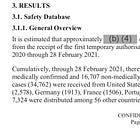
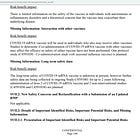
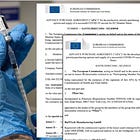
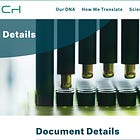


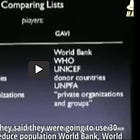
Disclosure is a start, but confession is good for the soul.
Expose the truth! Ephesians 5:11-14,